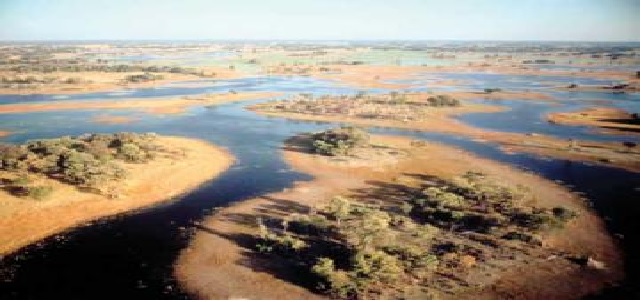The Global Water Partnership Southern Africa (GWPSA) has supported programmes in the SADC region aimed at reducing water demand, and consequently its impact on water security in the region. More recently, this was achieved through a 2016 study by GWPSA and CEEPA on “Understanding the efficient use of water in the Limpopo River Basin: A cost-benefit analysis process of water demand management as an adaptation strategy in the Limpopo River Basin”. The study was conducted under the auspices of the Resilience in the Limpopo Basin Programme (RESILIM), a USAID Southern Africa funded programme that seeks to support LIMCOM and other key stakeholders to improve the trans-boundary management and enhance the resilience of the people and ecosystems of the Limpopo River Basin.
The study results confirm to the need for various technologies and alternative water sources, such as wastewater/ recycled water as one of the key ways in helping reduce the pressure on the basin. The results of the study when referring to elements of wastewater reuse demonstrate that:
- The reuse of treated effluent not only strengthens the sustainability of water resources; but also strategically increases the security of supply through the diversification of water resources. In the Limpopo Water Management Area North (where treated water is used in mining and industry), Olifants River Catchment and eThekwini Municipality (Durban Water Recycling Project and Umgeni Water) in South Africa, treated wastewater is gradually being put to some economic use;
- Households and farmers are willing to use recycled water for agricultural purposes, watering gardens and flushing toilets. This is a step in the right direction with potential for reducing the pressure on current water usage as households can rely on conventional water sources for drinking and household consumption only. This calls for investments in: (i) The establishment and the maintenance of waste water treatment plants; and (ii) The need for two separate tanks with one dedicated to recycled water at household level;
- Awareness campaigns and exchange between countries should be encouraged amongst others to promote the use of recycled wastewater. Limpopo River Basin riparian countries could for instance learn from Namibia and South Africa on how recycled wastewater has been streamlined into major water usage patterns. Institutional capacity development and improved technologies may also be needed to improve awareness and increase the use of recycled wastewater in the Limpopo River Basin;
The study produced useful results for policy makers and private investors interested in investing in WDM. Key factors that influence a successful implementation of the WDM options to ensure that water remains affordable for all including the vulnerable groups include:
- Improving the enabling environment based on an adequate set of mutually supportive policies and a comprehensive legal framework with a coherent set of incentives and regulatory measures to support these policies;
- Enhancing capacity of institutions and coordination mechanisms between sectors that effectively carry along a variety of users and other stakeholders;
- Securing the human right for access to water for everybody and particularly for the poor; and
- Having in place a financing strategy that can cover the investment requirements for reducing water losses in the production-supply-utilization systems, control user wastage and stimulate water efficient economy and consumption patterns away from wasteful water intensive uses.
The study on the Limpopo River Basin shows that reducing and reusing wastewater extends beyond individual use and is the responsibility of all key sectors in industry. Beyond individual, industrial, local, regional experience, it is evident that on a global scale a clear strategy and action plan is required to address growing water concerns on water scarcity. Every time we use water, we create wastewater, mostly wasted to drain without giving it a second thought.
Celebrating #WWD today makes us examine and ask “Why Wastewater?” The case of the Limpopo River Basin reminds us that key factors such as awareness campaigns, financing, institutional capacity and coordination mechanisms between sectors, and regulatory measures supporting policies influence the successful implementation of Water Demand Management (WDM) options such as wastewater reuse and recycling. It further confirms that strategically managing wastewater provides an affordable and sustainable source of water and in some cases energy.
